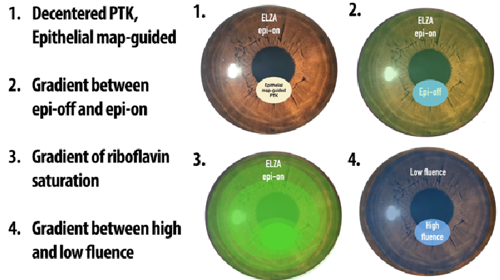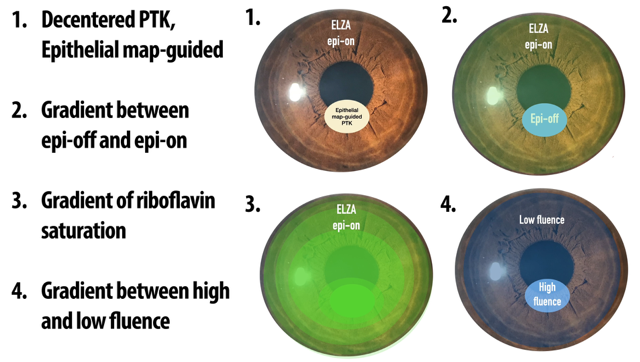Cornea, Corneal Therapeutics
Stabilising with PACE-CXL
Performed with advanced technologies, PACE-CXL procedure stops ectatic progression and improves vision.

Cheryl Guttman Krader
Published: Monday, December 2, 2024
Phototherapeutic keratectomy (PTK)-Assisted Customised Epi-on corneal cross-linking (PACE-CXL) in eyes with progressive keratoconus or other keratectasia halts further corneal steepening and rehabilitates vision because it both stabilises and regularises the cornea. Importantly, the effect on corneal shape is achieved without removing any stromal tissue, said Farhad Hafezi MD, PhD.
Developed at the ELZA Institute by Dr Hafezi and colleagues, the customised CXL procedure selectively “pushes down the cone.” Although it involves excimer laser use to selectively remove epithelium over the area of greatest steepening via an epithelial map-driven PTK, the CXL portion of the procedure is responsible for the treatment benefit, Dr Hafezi said.
“Some colleagues have said PACE-CXL is nothing new because they can stabilise the cornea and improve vision with the Athens or Cretan protocol combining topography-guided PRK with CXL,” he said. “That is true, but in these procedures, the remodelling effect comes from removing 50 microns of stroma with the excimer laser. In PACE-CXL, the stroma is not touched, and the entire effect comes from cross-linking. The excimer laser is just a very precise tool for creating the epithelial map-driven PTK.”
Epithelial map-driven PTK is done using a software add-on of the MS-39 (Schwind eye-tech solutions), a combined Placido ring/anterior segment OCT-based corneal topographer tomographer (CSO Italia), and the AMARIS (Schwind eye-tech solutions) excimer laser. CXL is performed with the C-eye device (EMAGine Switzerland) and is an epi-off/epi-on approach in which there is increased riboflavin saturation and oxygen availability over the site of localised epithelial removal. After irradiating the entire cornea, the epi-off area is treated again with another round of fluence. Together, the gradient differences in riboflavin, oxygen, and energy result in greater flattening at the cone relative to other areas of the cornea and much greater flattening compared to earlier generation CXL procedures, Dr Hafezi said.

The procedure results in immediate flattening and regularisation of the cornea, as cone depression leads to a coupling effect in which the surrounding tissue steepens. Remodelling occurs with epithelial regrowth, leading to some loss of the flattening effect. Topographic stability is usually achieved by month six.
“The thickness map does not change after PACE-CXL because the stroma is not removed, and the demarcation line follows the pattern of the gradient in the CXL effect,” Dr Hafezi said.
Thus far, surgeons at the ELZA Institute have performed PACE-CXL in more than 300 eyes, of which more than 150 have been followed for up to one year.
“Once the remodelling is complete, there have been cases where regularisation of up to 20 D has been observed with CDVA improvement of up to six lines,” Dr Hafezi said.
Because PACE-CXL does not remove stroma, Dr Hafezi said he is comfortable performing the procedure in younger patients with whom he would not perform an Athens or Cretan protocol. PACE-CXL is also being done to regularise the cornea and enhance biometry measurements before cataract surgery in older patients with stable keratoconus. Considering the need for longer follow-up to understand the long-term flattening effect of PACE-CXL, however, the procedure is only being performed in myopic eyes with a Kmax of at least 50 D.
Dr Hafezi spoke at the 2024 ESCRS Congress in Barcelona.
Farhad Hafezi MD, PhD, FARVO is the Chief Medical Officer of the ELZA Institute in Zurich, Switzerland, and Professor of Ophthalmology at Geneva University (Switzerland), NYU Langone (US), the USC Roski Eye Institute (US), and Wenzhou Medical University (China). fhafezi@elza-institute.com
